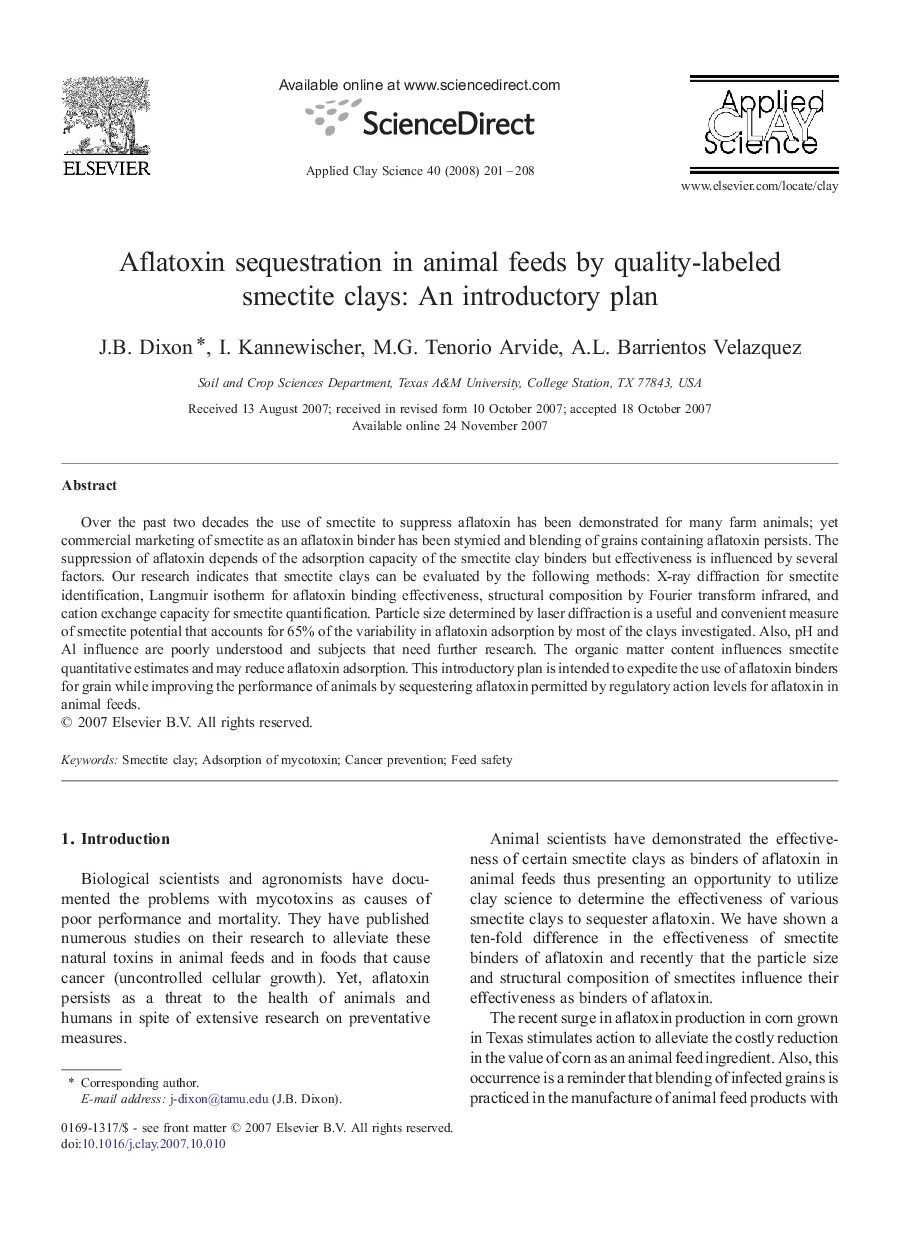| Article ID | Journal | Published Year | Pages | File Type |
|---|---|---|---|---|
| 1696222 | Applied Clay Science | 2008 | 8 Pages |
Over the past two decades the use of smectite to suppress aflatoxin has been demonstrated for many farm animals; yet commercial marketing of smectite as an aflatoxin binder has been stymied and blending of grains containing aflatoxin persists. The suppression of aflatoxin depends of the adsorption capacity of the smectite clay binders but effectiveness is influenced by several factors. Our research indicates that smectite clays can be evaluated by the following methods: X-ray diffraction for smectite identification, Langmuir isotherm for aflatoxin binding effectiveness, structural composition by Fourier transform infrared, and cation exchange capacity for smectite quantification. Particle size determined by laser diffraction is a useful and convenient measure of smectite potential that accounts for 65% of the variability in aflatoxin adsorption by most of the clays investigated. Also, pH and Al influence are poorly understood and subjects that need further research. The organic matter content influences smectite quantitative estimates and may reduce aflatoxin adsorption. This introductory plan is intended to expedite the use of aflatoxin binders for grain while improving the performance of animals by sequestering aflatoxin permitted by regulatory action levels for aflatoxin in animal feeds.
